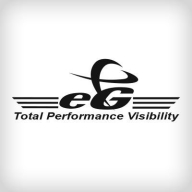

eG Enterprise and Nagios XI compete in the IT monitoring solutions sector. eG Enterprise appears to have the upper hand due to its comprehensive monitoring approach and detailed insights across all OSI model layers.
Features: eG Enterprise provides a single pane of glass for end-to-end service monitoring, detailed insights into the Citrix stack, and auto-configuration to expedite setup. It monitors all infrastructure elements and supports user behavior monitoring. Nagios XI offers open-source monitoring, extensive plugin options, and flexibility in infrastructure management. It allows custom plugin creation and simple configurations.
Room for Improvement: eG Enterprise users cite issues with TCP latency, the need for UI refreshes, and alarm display improvements. Complexity in configuration and high prices are also noted. Nagios XI users mention challenges with complex setup, the necessity for plugin development, and improvements in scalability and user interface. Integration with modern systems and ticketing solutions is desired.
Ease of Deployment and Customer Service: eG Enterprise supports varied deployment options with strong technical support and responsive customer service. Nagios XI is flexible across environments and backed by a dedicated user community, though its technical support is sometimes seen as less comprehensive than eG's.
Pricing and ROI: eG Enterprise is considered cost-effective for large-scale deployments but has high licensing costs. It offers a positive ROI through operational cost reductions. Nagios XI is valued for its open-source option, providing immediate ROI due to zero initial cost, while the enterprise version can be expensive. Its flexible pricing is beneficial for smaller budgets.


eG Enterprise is a comprehensive performance monitoring tool that monitors applications, infrastructure, and networks. eG Enterprise offers a complete performance management solution that delivers diagnosis and automated IT auditing, and offers extensive reporting to test application latencies, storage hotspots, network failures, server incompetencies, bottlenecks, user experience (UX) concerns, and more.
eG Enterprise monitors an organization’s total IT ecosystem and applications throughout every layer and all tiers and will take a deep dive to discover where a problem began, faster than any other solution. eG Enterprise is a complete solution that thoroughly monitors the end-user relationship for just about every IT deployment available, such as cloud-based microservices applications, enterprise applications, on-premise monolithic applications, and digital workspaces.
eG Enterprise is a flexible solution and can be deployed in various circumstances, wherever the digital experience of the user needs to be managed and IT infrastructures and applications need to be monitored. eG Enterprise is effective from legacy on-premise deployments to the most cloud-centric ecosystem in the marketplace today.
eG Enterprise Features
Reviews from Real Users
“The product makes data collection easy. It's simple to set up. The algorithm is the most valuable aspect of the solution. In a few minutes after the installations, we can get insights from my technical environment. After a few minutes, I can get some valuable insights to make decisions.” - Anderson L., LatAm Presales Analyst at CLM
“Some of the best features of eG are, in terms of APM, they have complete modules between application performance monitoring, server monitoring, and even storage and network-based monitoring. The UI is also quite good. They have some standard AI-based capabilities, even though it's not quite as advanced when compared to Dynatrace. eG has some good, basic APM capabilities.” - A PeerSpot user who is a Consultant at a tech services company
Nagios XI provides monitoring of all mission-critical infrastructure components, including applications, services, operating systems, network protocols, systems metrics, and network infrastructure. Third-party add-ons provide tools for monitoring virtually all in-house and external applications, services, and systems.
Nagios XI uses a powerful Core 4 monitoring engine that provides users with the highest levels of server monitoring performance. This high degree of performance enables nearly limitless scalability and monitoring powers.
With Nagios XI, stakeholders can check up on their infrastructure status using the role-based web interface. Sophisticated dashboards enable access to monitoring information and third-party data. Administrators can easily set up permissions so users can only access the infrastructure they are authorized to view.
Nagios XI Benefits and Features
Some of the benefits and top features of using Nagios XI include:
Reviews from Real Users
Nagios XI stands out among its competitors for a number of reasons. Several major ones are its integration options and monitoring abilities, as well as its alerting features.
David P., a senior DevOps engineer at EML Payments Ltd, writes, “We use Nagios as a network discovery tool. We use Nagios to maintain our uptime statistics and to monitor our services. It has allowed us to be much more sophisticated in our monitoring and alerting.”
An IT-OSS manager at a comms service provider notes, “Nagios XI has a custom API feature, and we can expose custom APIs for our integration. This is a great feature.”
We monitor all IT Infrastructure Monitoring reviews to prevent fraudulent reviews and keep review quality high. We do not post reviews by company employees or direct competitors. We validate each review for authenticity via cross-reference with LinkedIn, and personal follow-up with the reviewer when necessary.